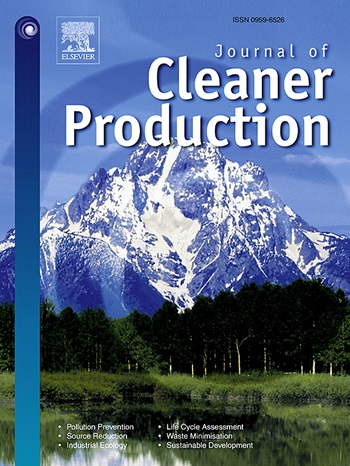Comparative Life Cycle Assessment of Membrane Distillation for Inland Concentrate Management
IF 9.7
1区 环境科学与生态学
Q1 ENGINEERING, ENVIRONMENTAL
引用次数: 0
Abstract
Membrane Distillation (MD) is an emerging thermally assisted desalination process that can produce high-quality water from high-salinity streams using low-grade heat, thus supporting near-zero liquid discharge. To adopt MD as a concentrate management technology, it is essential to compare environmental and economic implications of MD to conventional management alternatives. This work presents a comparative environmental life cycle and cost assessment of MD and conventional concentrate management technologies (i.e., evaporation ponds, deep well injection (DWI), mechanical concentrators) for the treatment of saline streams. Environmental impacts are quantified as a single score in pts/m3. Results indicate that MD has the second lowest environmental impact scores, with a range between 0.02 -0.04 pts/m3 and cost from 0.81-1.52 USD/m3. Although evaporation ponds and DWI have some of the lowest environmental impacts (0.01-0.13 pt/m3) and disposal costs (1.05-6.77 USD/m3), the application of these technologies are limited to geographical constrains (e.g., climate and geology). Additionally, despite the low environmental impact of evaporation ponds and DWI, they do not place value on resource recovery. Finally, although brine concentrators offer a modular and scalable approach to concentrate management, they have the highest impacts and costs ranging from 1.04-1.18 pts/m3 and 7.47-7.94 USD/m3, respectively. In each system, the main environmental and cost stressors can differ, signifying the lowest cost does not always align with the lowest impact – underscoring the need for tailored treatment solutions. Overall, results support MD as a cost-competitive concentrate management technology with low environmental impacts and the added benefit of producing high-quality water.

内陆精矿膜蒸馏管理的生命周期比较评价
膜蒸馏(MD)是一种新兴的热辅助脱盐工艺,可以使用低品位的热量从高盐度的溪流中生产高质量的水,从而支持接近零的液体排放。为了采用化学浓缩作为一种浓缩管理技术,必须将化学浓缩与传统管理方法对环境和经济的影响进行比较。这项工作介绍了MD和常规浓缩管理技术(即蒸发池、深井注入(DWI)、机械浓缩器)处理含盐溪流的环境生命周期和成本的比较评估。环境影响被量化为分数(pts/m3)。结果表明,MD的环境影响得分第二低,范围在0.02 -0.04分/立方米之间,成本在0.81-1.52美元/立方米之间。尽管蒸发池和DWI对环境的影响最低(0.01-0.13 pt/m3),处置成本最低(1.05-6.77 USD/m3),但这些技术的应用受到地理限制(例如气候和地质)。此外,尽管蒸发池和DWI对环境的影响较小,但它们对资源恢复没有价值。最后,尽管卤水浓缩器提供了一种模块化和可扩展的浓缩管理方法,但它们的影响最大,成本分别为1.04-1.18 pts/m3和7.47-7.94 USD/m3。在每个系统中,主要的环境和成本压力因素可能不同,这意味着最低成本并不总是与最低影响相一致,这强调了定制处理解决方案的必要性。总体而言,结果支持MD作为一种具有成本竞争力的浓缩物管理技术,具有低环境影响和生产高质量水的附加效益。
本文章由计算机程序翻译,如有差异,请以英文原文为准。
求助全文
约1分钟内获得全文
求助全文
来源期刊

Journal of Cleaner Production
环境科学-工程:环境
CiteScore
20.40
自引率
9.00%
发文量
4720
审稿时长
111 days
期刊介绍:
The Journal of Cleaner Production is an international, transdisciplinary journal that addresses and discusses theoretical and practical Cleaner Production, Environmental, and Sustainability issues. It aims to help societies become more sustainable by focusing on the concept of 'Cleaner Production', which aims at preventing waste production and increasing efficiencies in energy, water, resources, and human capital use. The journal serves as a platform for corporations, governments, education institutions, regions, and societies to engage in discussions and research related to Cleaner Production, environmental, and sustainability practices.
 求助内容:
求助内容: 应助结果提醒方式:
应助结果提醒方式:


